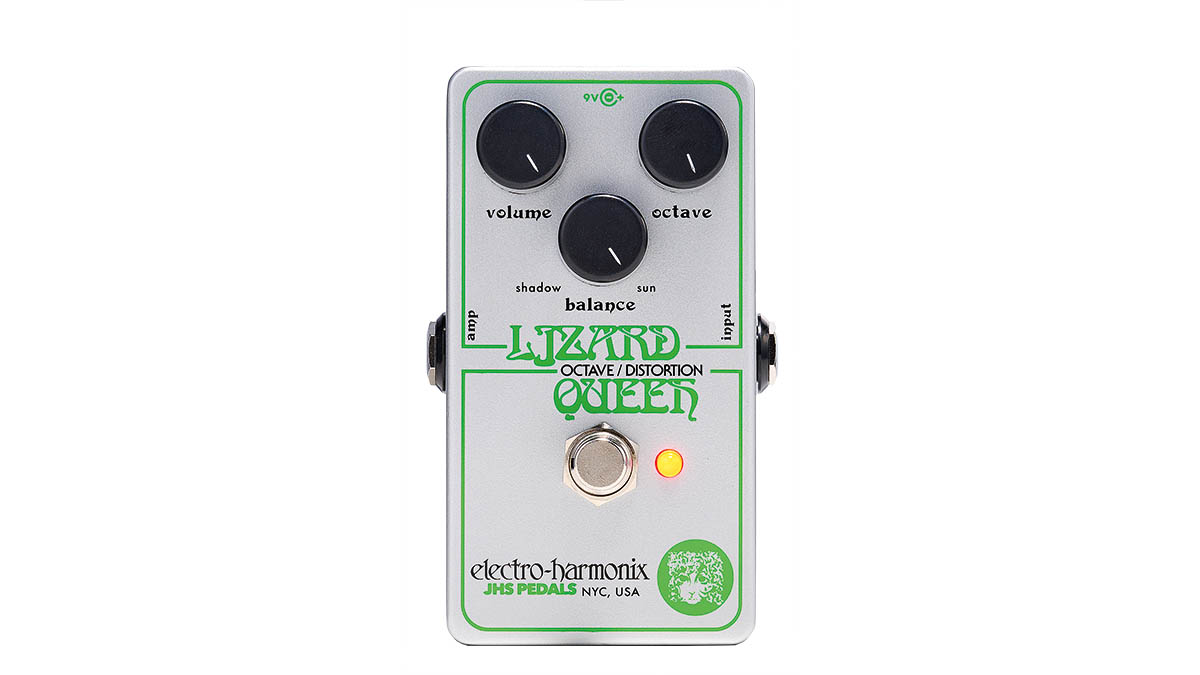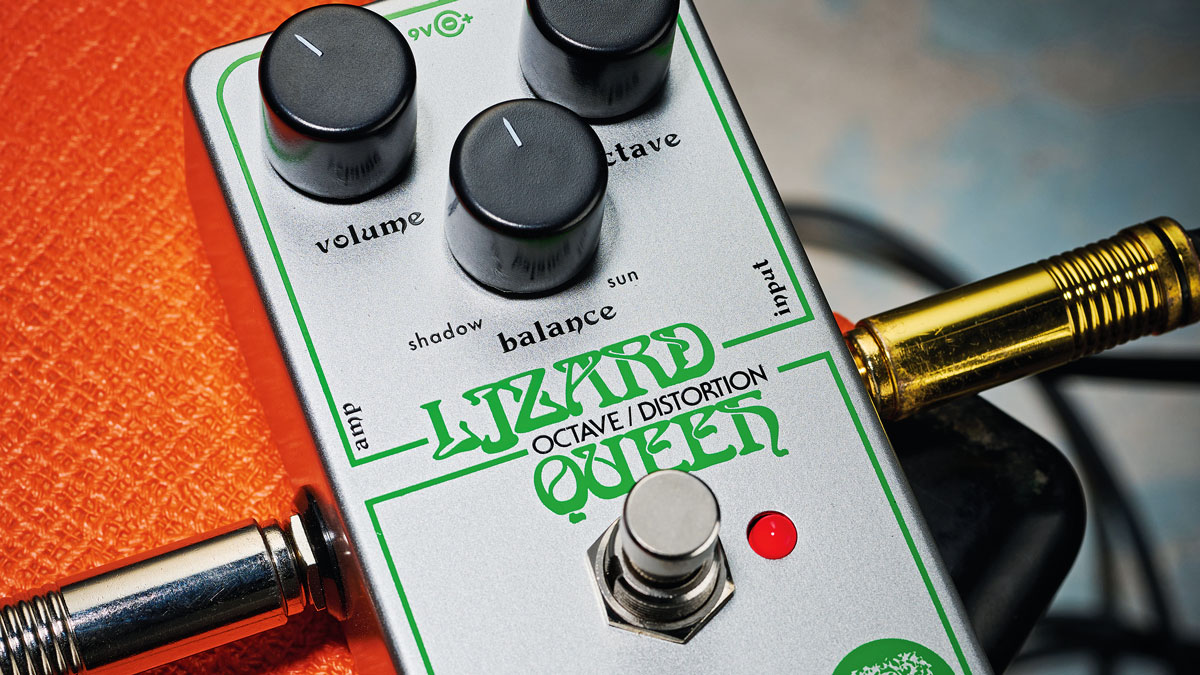Guitar World Verdict
It may be the pedal that never was, but we’re glad it’s here now. The Lizard Queen is a fine example of octave fuzz, with the adjustable octave giving you a real flexibility in dialling in your chosen sound.
Pros
- +
Compact size.
- +
Solidly usable fuzz sound.
- +
Adjustable octave.
- +
Cool vintage graphics.
Cons
- -
Some may prefer smoother clean-up characteristics.
You can trust Guitar World
For those of us playing guitar in the 1970s, the Electro-Harmonix range looked unique and quite exotic with those huge metallic enclosures, quirky graphics and, best of all, those names – Electric Mistress, Big Muff Pi, Screaming Tree, Bad Stone and so on.
Bringing things up to date, in 2022 pedal nerd Josh Scott of JHS Pedals took on the task of creating a homage to that era: an Electro-Harmonix pedal that never existed but could have.
EHX never actually made an octave fuzz pedal, so Josh took up the challenge, dived in and came up with the Lizard Queen, with Daniel Danger providing the artwork. The next stage was EHX head honcho, Mike Matthews, getting involved and the pedal went into production. A limited-edition JHS-built big box ’70s-style pedal has sold out, so it’s this nano series pedal from EHX that you’ll find in the shops.
This is a fixed-gain fuzz with no gain knob, just a volume control for setting the output level, which seems to be at unity at around 11 o’clock leaving plenty of leeway to build in a boost. You get a fine vintage fuzz sound with a bright tonality, and the gain amount seems to have been chosen just right for everyday playing tasks.
Variations in its character come via a Balance knob that runs from Shadow to Sun and has more than just EQ going on. The fuzz is at its smoothest at the Shadow end and has decent clean-up characteristics, but advance the knob and you get a tonal change and a spittier sound that becomes really apparent if you roll back your guitar volume for some gated glitchiness.

The Octave is added to the signal chain by its own dedicated knob, which means you can go from none, to just a tickle, and all the way to a point where it really sings through.
There are some great sounds wherever you are on the dial with plenty of interaction between the knobs to explore. The effect of the balance knob is especially apparent with the octave turned up high, and raucousness abounds towards the Sun end.
All the latest guitar news, interviews, lessons, reviews, deals and more, direct to your inbox!
Specs

- PRICE: $/£99
- ORIGIN: USA
- TYPE: Octave fuzz pedal
- FEATURES: True bypass
- CONTROLS: Volume, Octave, Balance, Bypass footswitch
- CONNECTIONS: Standard input, standard output
- POWER: 9V battery or 9V DC adaptor (not supplied) 5mA
- DIMENSIONS: 66 (w) x 111 (d) x 50mm (h)
- CONTACT: EHX
Trevor Curwen has played guitar for several decades – he's also mimed it on the UK's Top of the Pops. Much of his working life, though, has been spent behind the mixing desk, during which time he has built up a solid collection of the guitars, amps and pedals needed to cover just about any studio session. He writes pedal reviews for Guitarist and has contributed to Total Guitar, MusicRadar and Future Music among others.


